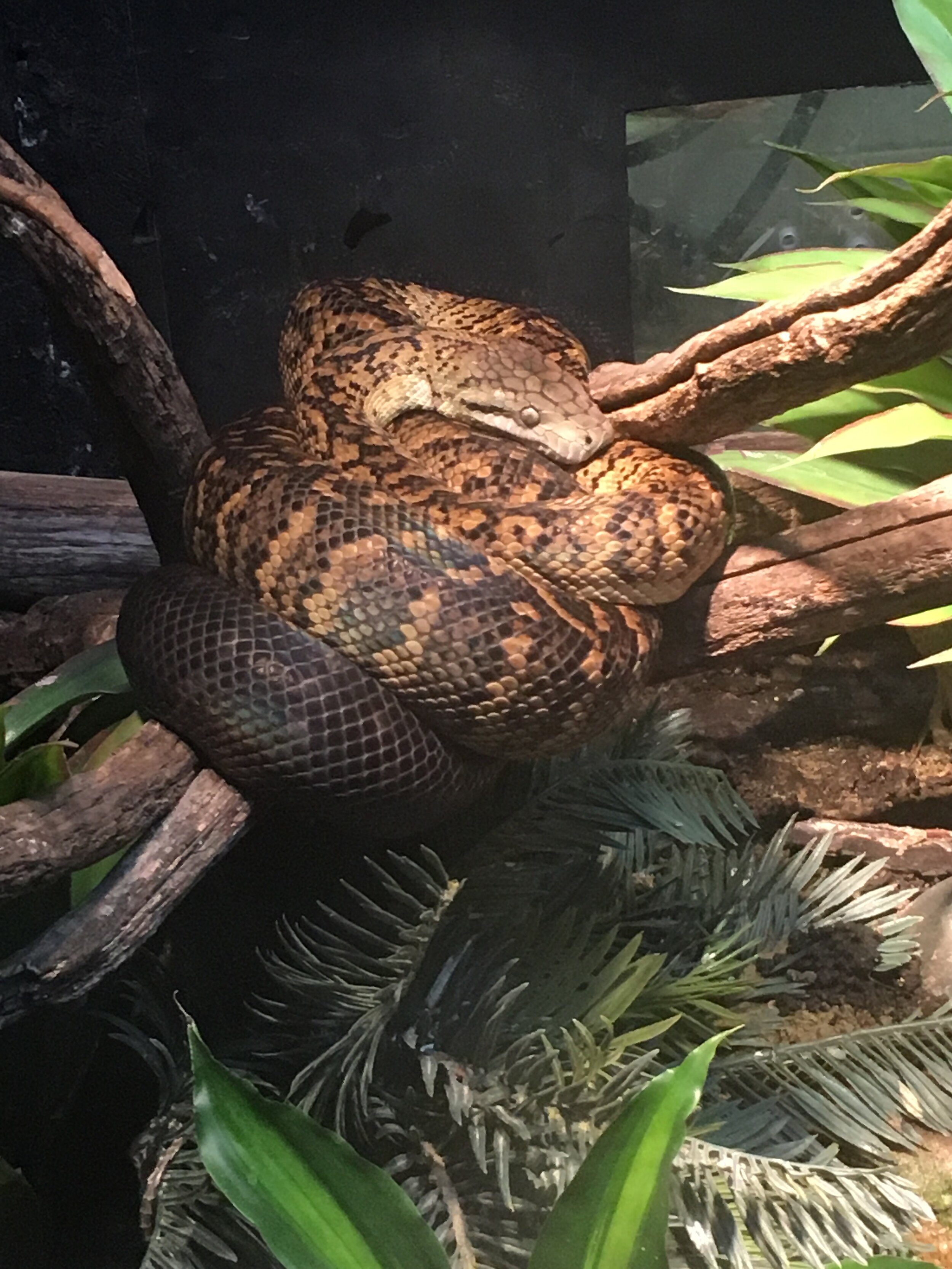Jamaican Boa
Photo of Jamaican Boa
Scientific Name: Epicrates subflavus
Other Common Names: Yellow Boa
Range: Jamaica
Habitat: Woodlands
Conservation Status: Vulnerable
Size: 1.5m - 2.3m
Description
The Jamaican Boa is the largest native predator in Jamaica. This endemic snake is pale yellow - brown in colour with black markings along its body. In direct light, the skin of the Jamaican Boa gives off an iridescent sheen. Adult Jamaican Boas can get very large ranging from 1.5 m to 2.3 m (approximately 4.9 ft to 7.2 ft).
Range
The Jamaican Boa is endemic to Jamaica.
Habitat
The Jamaican Boa spends most of its time in trees and can be found in woodlands and forests.
Diet
The Boa’s diet mostly consists of rats, lizards, bats, frogs and small birds.
The Jamaican Boa is nocturnal and hunts its prey at night waiting patiently before ambushing its prey.
It is susceptible to poisoning from accidently eating the invasive Cane Toad that releases the poison Bufogenin as a defense mechanism.
Breeding
Breeding Season occurs between the months of March - April and gives birth to live young during September - October.
Females choose their partners based on smell and can have a litter size of 20 offspring on average.
Conservation Status
Vulnerable.
Jamaican Boa populations are relatively small and few across the island.
Threats
Two of the major threats affecting the Jamaican Boa is habitat destruction and humans.
Land is constantly cleared for agriculture, timber harvesting and development which reduces the potential habitats for the Jamaican Boa. Boas are also constantly being killed on sight by people afraid of the snake and think that it is venomous.
This unnecessary act greatly reduces the already small population.
